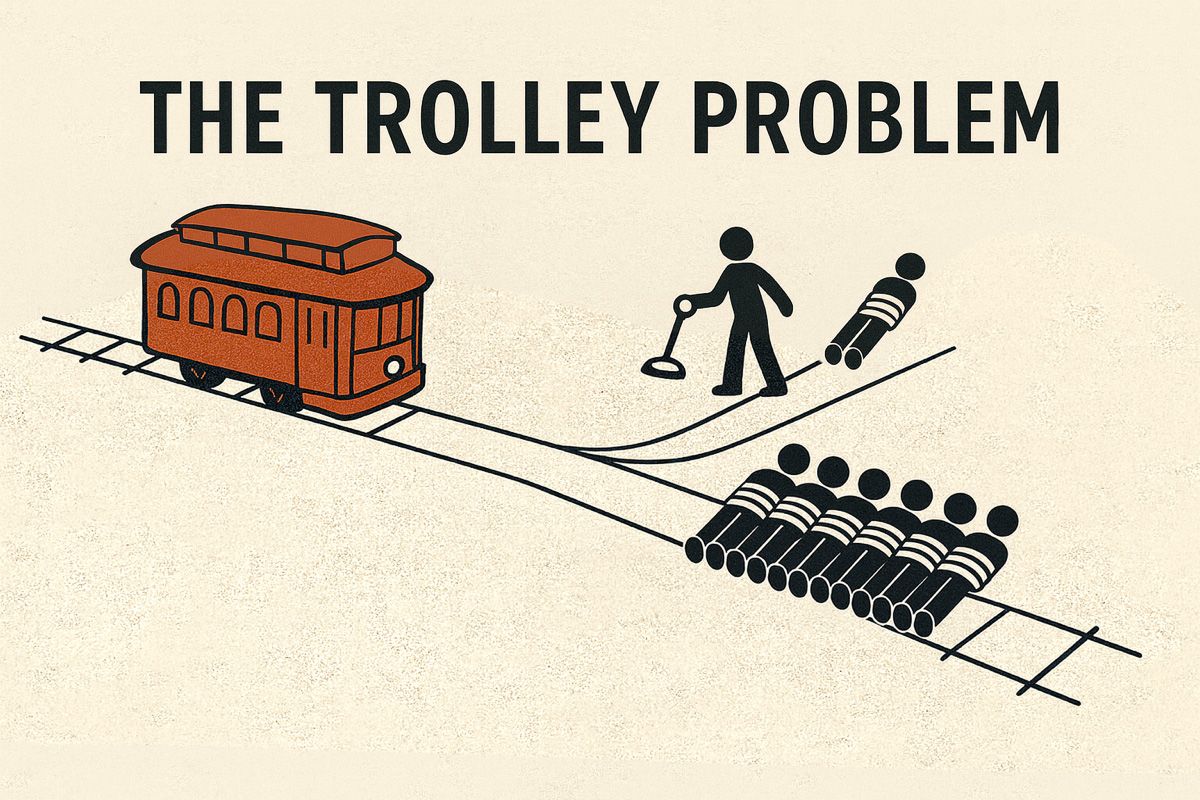I’m sure most of you are familiar with the trolley problem. It’s fairly famous in our cultural imagination by now, so even if you think you aren’t aware of it, I bet it will sound familiar.

Briefly: imagine an out-of-control trolley speeding down the track. In front of it, tied to the line, are five people. Between the trolley and the five is a switch. You aren’t close enough to untie anyone, but you are close enough to flip the switch before the trolley gets there and save all five.
The problem is, the line you’d switch the trolley to has one person tied to it. So if you flip the switch, you are condemning that person to death.
Do you choose to save the five and condemn the one, or do you choose not to act and let five die? Surprisingly, many people choose not to act, sparing themselves the knowledge that they directly caused someone’s death, even if their inaction allows five to die.
There are countless variations meant to complicate the choice: what if the one person is a child and the five are elderly? What if the one is a woman and the five are men? What if the one is an innocent person while the five are criminals? And on and on.
In the end, it always boils down to the same brutal decision: deciding who lives and who dies. Will you directly kill one, or indirectly allow many to die? It is the quintessential no-win scenario.
And far from being a pointless philosophical exercise, the trolley problem has real-world applications. Law enforcement officers can be thrust into sudden situations where they must decide instantly, without the luxury of abstract debate. If a cop is thrown into a situation like this, he doesn’t have time to sit and think it through — he has to act instantly!
Driverless cars bring the problem into our own lives. Imagine your car is cruising when an unavoidable accident occurs. Staying the course will kill you, slamming on the brakes will kill the driver behind you, and veering left or right will kill pedestrians. Someone dies no matter what is chosen. So what should the AI decide? Should it scan ages, calculate probabilities, and sacrifice the oldest? Or something else?
This is real life: there is no comic book cheat code. You can’t somehow stop time or speed up and save everyone. Someone has to die.

Most people would rather not think about the trolley problem. It’s uncomfortable, and it feels safer to believe we’ll never face it. But technology and circumstance suggest otherwise.
So — what is your answer to the trolley problem?
❦
 |
David is an American teacher and translator lost in Japan, trying to capture the beauty of this country one photo at a time and searching for the perfect haiku. He blogs here and at laspina.org. Write him on Bluesky. |